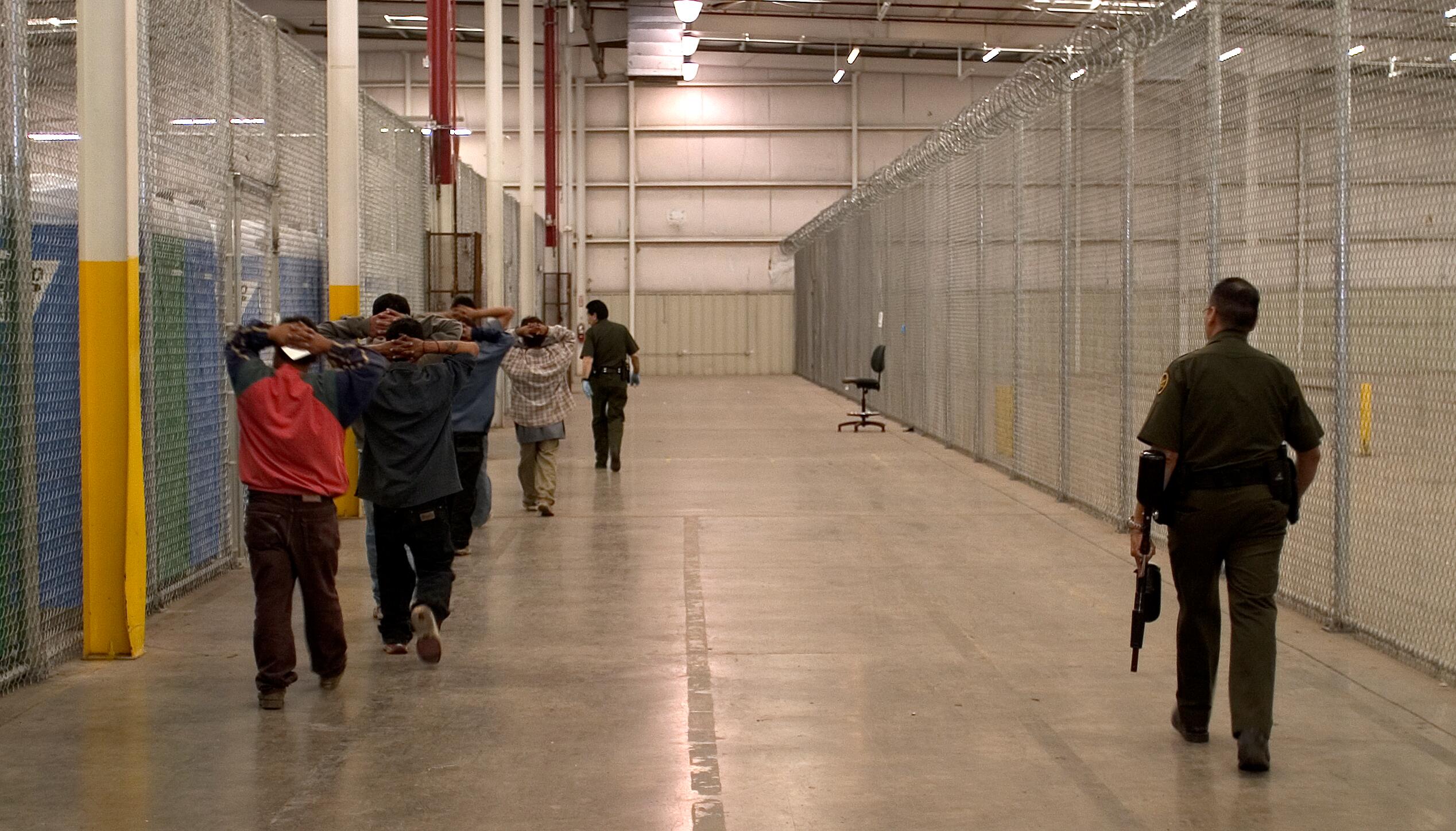D.C. Circuit Rules That Public Health Law Empowers Government to Expel Asylum-Seekers—But Not to Countries Where They Face Persecution or Torture
The U.S. Court of Appeals for the District of Columbia Circuit recently ruled in a challenge to a policy of expelling asylum-seekers at the border during the coronavirus pandemic, offering partial victories both to the government and to those challenging the measure.

Published by The Lawfare Institute
in Cooperation With

The U.S. Court of Appeals for the District of Columbia Circuit recently ruled in a challenge to a policy of expelling asylum-seekers at the border based on an obscure public health law. In Huisha-Huisha v. Mayorkas, the court affirmed in part a preliminary injunction against the Trump-era policy, which the Biden administration has embraced with some modifications. In recognizing an expansive federal power to expel asylum-seekers, only limiting the places to which the executive may expel them, the court handed both the administration and the challengers partial victories.
At the start of the coronavirus pandemic, President Trump’s Department of Homeland Security seized on an obscure public health law as a potential source of authority to exclude asylum-seekers at the southern border. Title 42, Section 265, titled “Suspension of entries and imports from designated places to prevent spread of communicable diseases,” authorizes “the Surgeon General” to prohibit “the introduction of persons and property” from places where “by reason of the existence of any communicable disease in a foreign country there is serious danger of the introduction of such disease into the United States, and that this danger is so increased by the introduction of persons or property from such country [to justify a prohibition on the introduction of persons or property from said places.]” Today, the Centers for Disease Control and Prevention (CDC), rather than the surgeon general, makes that determination.
CDC officials initially opposed using Title 42 to justify expulsions, claiming that the expulsions lacked any public health justification. But the Department of Homeland Security overcame this resistance. On March 20, 2020, the Department of Health and Human Services issued a final rule authorizing the CDC director to ban entry of persons “who would otherwise be introduced into a congregate setting in a land or coastal [POE] or Border Patrol station[.]” Although Section 265 does not distinguish between citizens and noncitizens, the CDC order applies primarily to noncitizens lacking entry documents. It explicitly exempts U.S. citizens, lawful permanent residents and others.
A substantial portion of noncitizens seeking to enter the U.S. without valid entry documents are typically seeking asylum. Scholars have long observed that asylum-seekers often lack entry documents because U.S. law does not provide for an asylum visa or any entry documents for the purpose of seeking humanitarian protection. But as leading refugee law scholars argued in an amicus brief in Huisha-Huisha, Congress already provided for summary removal of noncitizens lacking travel documents through a process known as “expedited removal.” The only group of such noncitizens exempt from expedited removal are those who express a “credible fear” of returning to their home countries. Those noncitizens are instead screened for eligibility for humanitarian protection. As a result, the CDC order appeared to close that one remaining gap, leading some commentators to decry the Title 42 policy as an “asylum ban.”
Much to the disappointment of asylum-seekers and their advocates and allies, the Biden administration chose to continue the Title 42 policy, despite the availability of coronavirus vaccines and testing, and the fact that the CDC order covers just 0.1 percent of border crossers. Last summer, however, the CDC revised the policy to exempt unaccompanied minors.
In Huisha-Huisha, plaintiffs are six families subject to the CDC order challenging it on behalf of a class of similarly situated families. Plaintiffs challenged the CDC order as a violation of statutory and administrative law. Specifically, plaintiffs asserted that Section 265 authorizes measures such as quarantines rather than summary expulsions of noncitizens without an opportunity to apply for humanitarian protection. Plaintiffs further asserted that the CDC order violates noncitizens’ statutory right to seek asylum and the statutory prohibition against expulsion to countries where noncitizens would face persecution or torture. Finally, plaintiffs asserted that the CDC order was “arbitrary and capricious” under the Administrative Procedure Act (APA) because the order lacked an adequate public health justification. Plaintiffs sought injunctive relief. The district court agreed that Section 265 did not authorize the federal government to expel asylum-seekers. It granted a preliminary injunction.
The D.C. Circuit affirmed this ruling in part. Contrary to the district court’s conclusion, however, the D.C. Circuit ruled that Section 265 likely authorized expulsions, despite the lack of any express grant of that power. The court first concluded that Section 265 likely applied not only to transportation providers, like ships in the time of cholera, but also to individuals “introducing” themselves into the country.
The court then offered a novel view of the source of the government’s claimed expulsion power. Instead of locating it in Section 265’s terms, the court read that provision alongside a provision of the Immigration and Nationality Act (INA) that makes noncitizens deportable if they are present “in violation of [the INA] or any other law of the United States.” The court reasoned that a person who “introduces” themselves into the U.S. (in Section 265’s parlance) without valid entry documents “is present in violation” of the CDC order. But the INA provision they rely on applies solely to individuals who have already been admitted—unlike the plaintiffs who are “arriving,” rather than “admitted,” noncitizens.
The court did, however, side with the plaintiffs by determining that refugee law likely limits this power. Specifically, 8 U.S.C. § 1231(b)(3)(A), which codifies U.S. obligations under the Refugee Convention, prohibits the federal government from expelling noncitizens to places where they would face torture or persecution based on characteristics such as race or religion. This provision imposes a mandatory duty precluding the executive from expelling noncitizens to such places, not merely a discretionary authority to withhold removal.
The D.C. Circuit thus awarded both sides a partial victory, finding the equitable factors considered in a preliminary injunction to favor the plaintiffs and concluding that the district court had not abused its discretion.
As proceedings continue in the district court, a key question remains whether the CDC order violates noncitizens’ statutory right to apply for asylum. Under 8 U.S.C. § 1158(a), Congress provides that any noncitizen, regardless of status or manner of entry, is eligible to apply for asylum. The D.C. Circuit questioned if the CDC’s order violates this provision. The district court might also question whether the CDC order is “arbitrary and capricious” in violation of the APA given what plaintiffs contend is the lack of a bona fide public health justification.
The D.C. Circuit invited the district court to consider the question of whether the executive possesses an inherent executive power to expel noncitizens apart from the terms of Section 265. Whether the district court finds occasion to consider the question, let alone announce and elaborate on such a power in this case, remains to be seen.
In the days after the Huisha-Huisha decision was issued, the Biden administration reportedly began considering rescinding the policy. Well over 1 million expulsions later, such a move is widely seen as long overdue.



.jpg?sfvrsn=676ddf0d_7)

